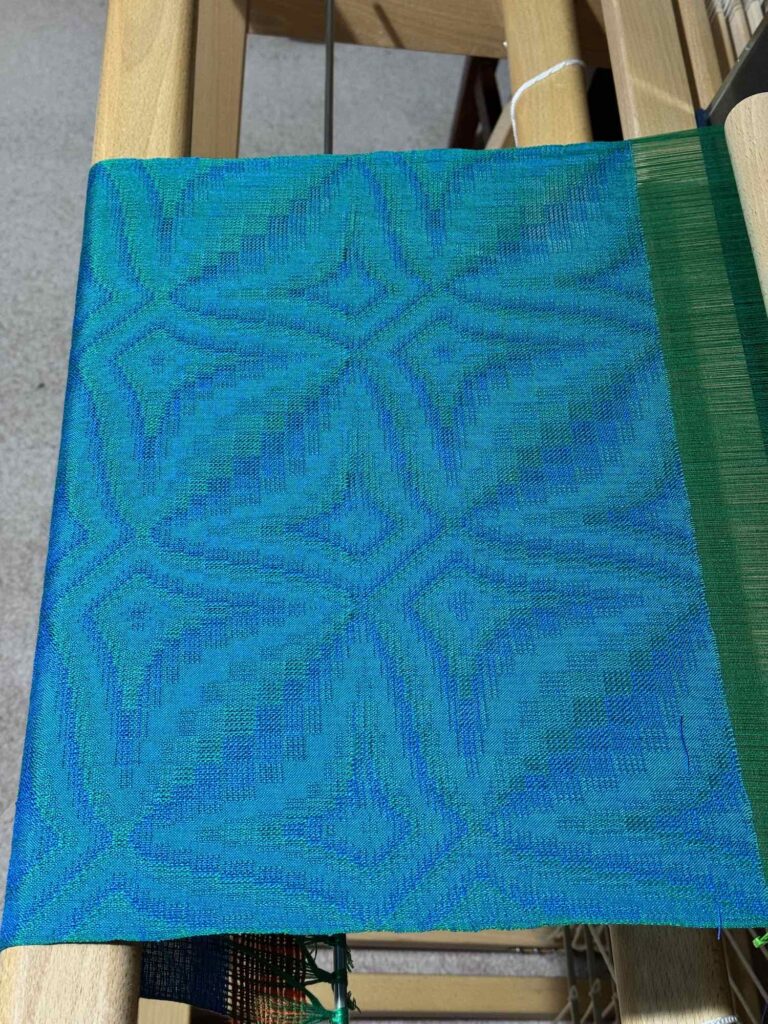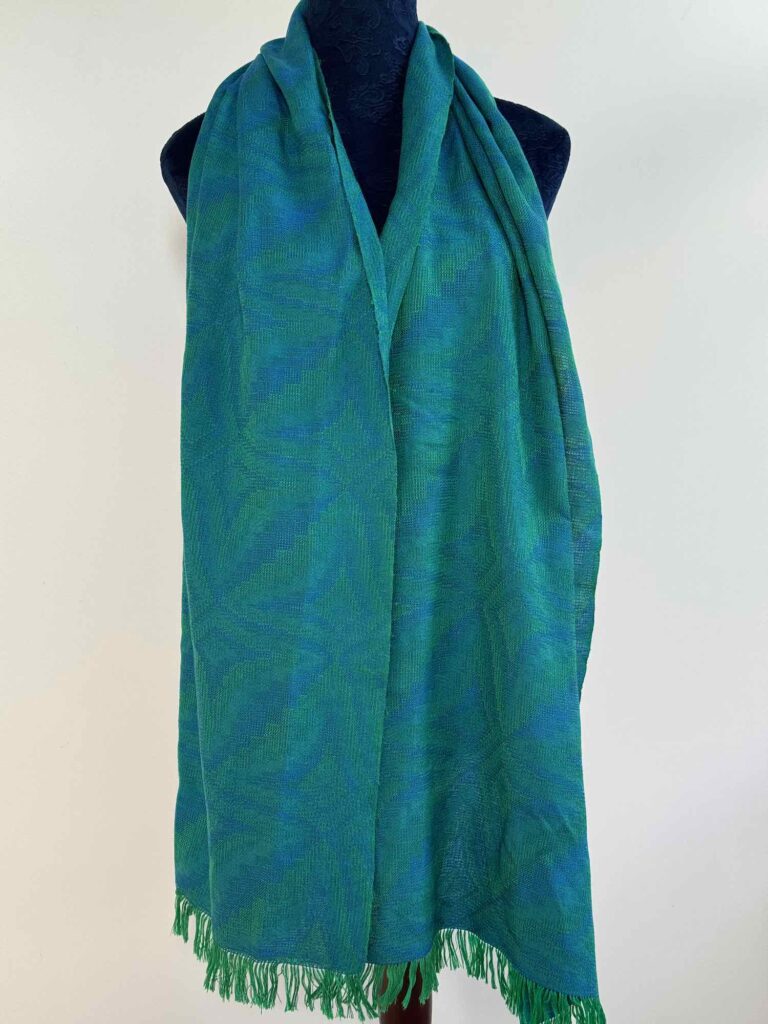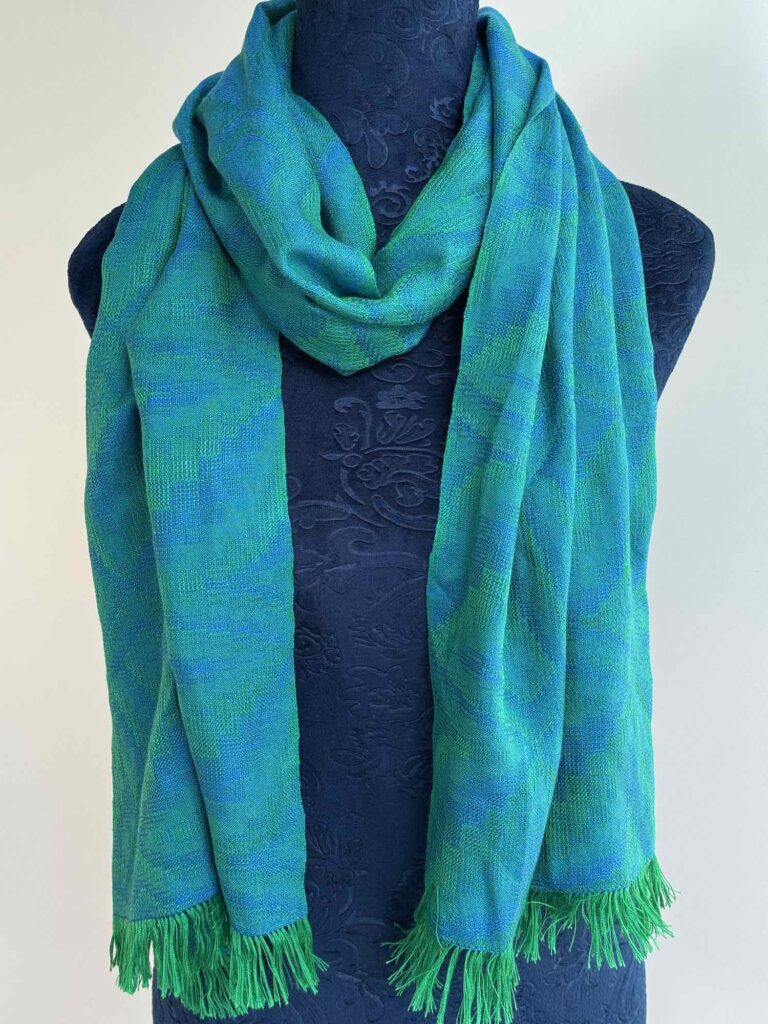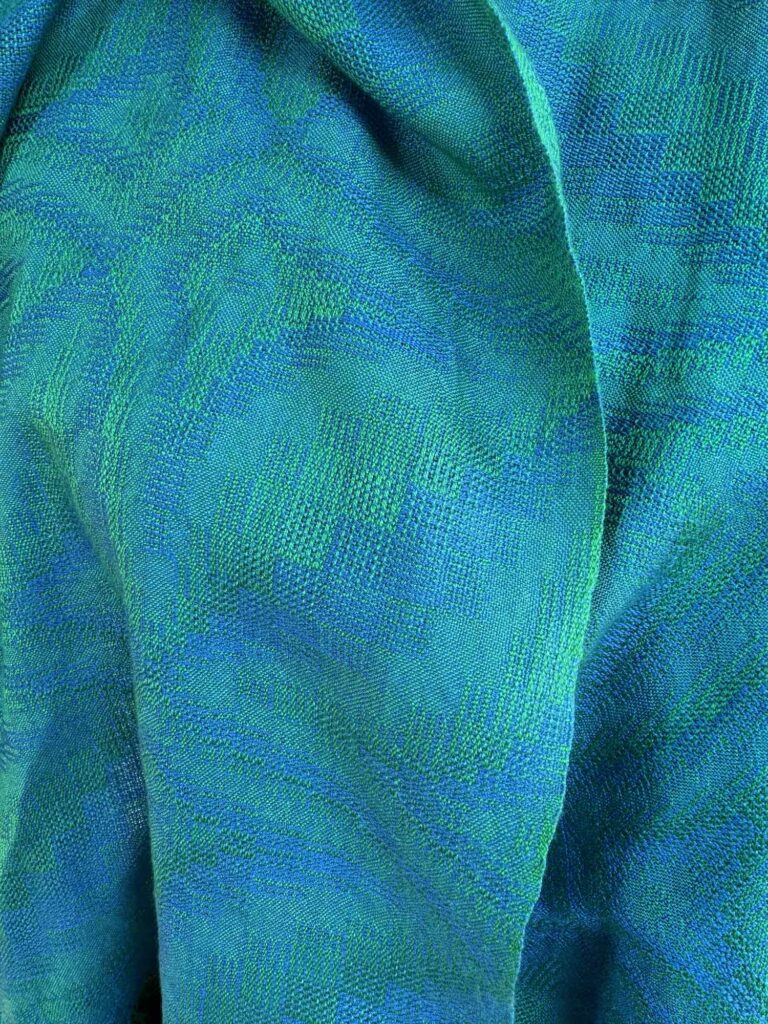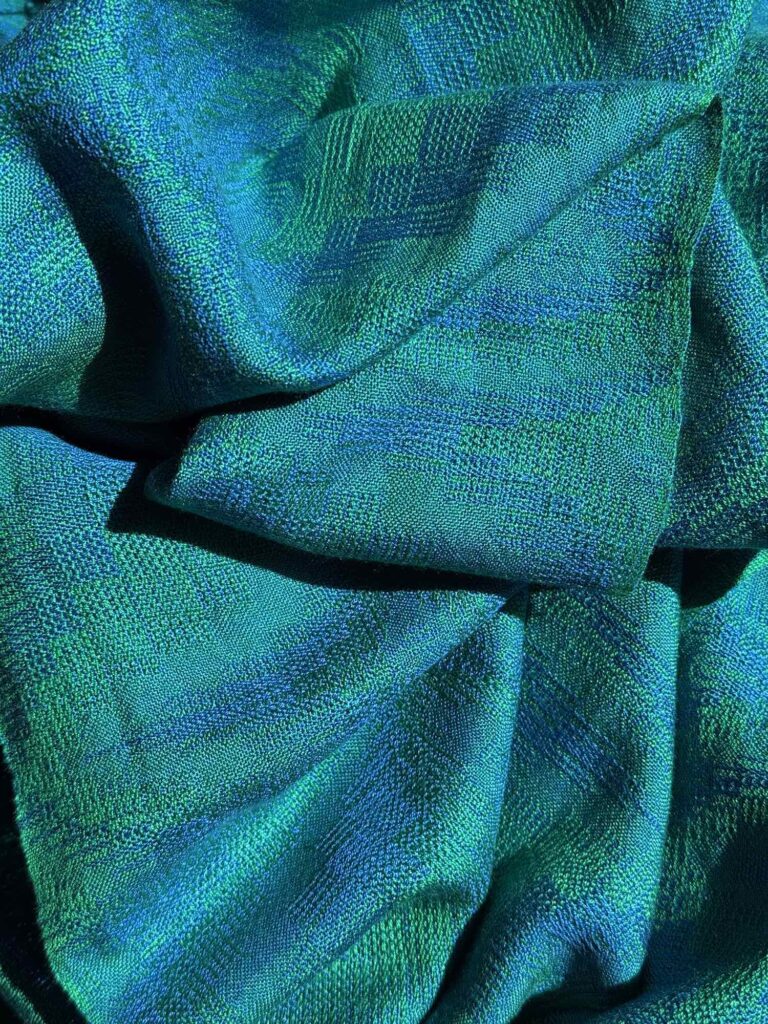Husband asked me to weave him a scarf using the same crackle weave pattern as in Warp 48 (minor adjustments to 8771 from handweaving.net – https://www.handweaving.net/draft-detail/8771/crackle-with-swirls-sally-breckenridge-california-2004-2024).
Warp yarn – Bluegrass Mills 60/2 mulberry silk, colour Fern (green)
Weft yarn – Bluegrass Mills 60/2 mulberry silk, colour Blue salvia (royal blue)
There are 262 ends in a single pattern repeat, I will have 3 repeats in the warp. The number of repeats in the weft will depend on the number required to create a scarf of sufficient length – I want at least 175cm of finished fabric. The full planning details can be seen in the entries for Warp 48.
Total ends = 790 (262 per pattern repeat, 3 repeats + 4 for floating selvedges, 2 per side)
Wind warp with 4 ends in hand
Warp length – 2.5m long (1 piece 1.75m long + sampling + shrinkage + loom loss)
On loom width – 46cm (spread 8,8,8,8,12 in raddle – 2 slots/cm)
EPI & PPI – 43
Reed – 16dpi
Sley reed – 2,3,3 ends per dent
Treadling = TAW
Once the design and calculations were completed, I wound 3 balls of warp yarn from the main cone so that I could wind the warp with 4 ends in hand.
The warp was then spread in the raddle, wound onto the warp beam, the heddles threaded, the reed sleyed, the warp ends tied to the front apron rod and the treadles tied up (plain weave = 1,3,5,7 & 2,4,6,8).
While threading, I ran into problems with static electricity – the ends were either flying away from or sticking to each other. In order to get around this, I kept spraying my hands with water and wiping the water along the ends I was working with.
Once the loom was dressed, I checked for threading or sleying errors using the plain weave treadles. I found 4 sleying errors where threads had been crossed between the heddles and the reed – these were easily corrected by untying the bundle from the apron rod, resleying the ends as required and retying to the apron rod.
Header rows were then woven, followed by two rows of plain weave for hemstitching. Over the next few days, I wove 13 pattern repeats before hemstitching and removing the fabric from the loom.
| Pattern repeat | Length (cm) |
| 1 | 15 |
| 2 | 14.5 |
| 3 | 16.5 |
| 4 | 15.5 |
| 5 | 15.5 |
| 6 | 17 |
| 7 | 15 |
| 8 | 14 |
| 9 | 14 |
| 10 | 13.5 |
| 11 | 14 |
| 12 | 14.5 |
| 13 | 14.5 |
| Total (on loom) | 193.5 |
While weaving, I found a great rhythm that gave me pretty good selvedges and required no manual manipulation of the weft or selvedges – each pattern repeat took about 20 minutes. At about the 8th repeat, I found that the right hand selvedge threads were fraying, so I reverted to manual placement of the weft at this edge – this slowed me down to about 35 minutes per pattern repeat.
One of the warp threads frayed completely – I hung this down in front of the heddles until I had woven about 5cm of fabric. I then threaded the frayed end through the reed and attached to the woven fabric with a pin and figure-8 and continued weaving as normal; after weaving a further ~30cm, I removed the pin. As the thread was right near the edge, the section where it is missing is not noticeable – it is concealed by the draw-in.
After the fabric was off the loom, the fringes were trimmed with a rotary cutter, the fabric washed, all loose ends were trimmed, the fabric pressed and laid flat to dry.
Pre-wash = 44cm x 185cm
Post-wash = 43cm x 182cm
Weight = 107g
The colours, iridescence, drape and feel are all lovely. Husband really likes his new scarf!
